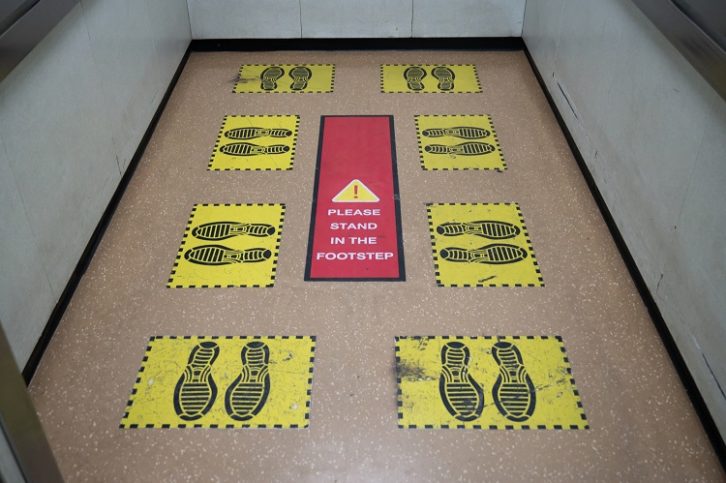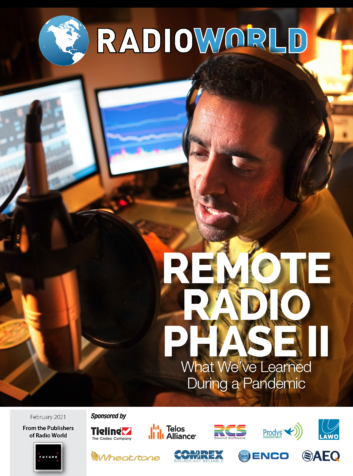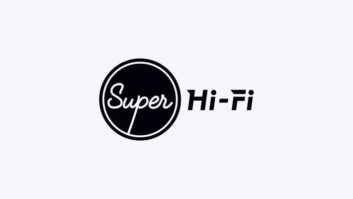
The author is manager of broadcast systems at WBUR Boston University and former technical editor of RW Engineering Extra.
This past year-plus has been an experience in survival for everyone, with the pandemic affecting all of us in our work and personal lives.
Reflecting back on the last 14 months, I’m proud of the work we did at the height of the virus panic to convert the large majority of our on-air staff to working from home during the period from April to June of 2020. The need to protect both the staff and station operations was unarguable in those early days, when we knew little about a new virus that was spreading worldwide beyond almost anyone’s control.
For some, remote operations may become the “new normal.” Radio broadcasters have shown they can do more remotely than they believed possible. It’s of value to look back, consider what worked best and how we might continue to employ these remote techniques going forward.
Prevention success
What did we learn from moving as many people from the building as possible? Well, for one it was a fairly effective way to reduce virus infections.
Our facilities are crowded, with about 200 plus people occupying just under 40,000 square feet of office and studio space. We have the typical open office areas with small cubicles laid out in grids for most of the support staff, combined with about 10 control rooms (some just large enough for voice-over work and others designed for a full complement to support a live news magazine style program with live phone call-ins). We had to get most people out of the building over a short period of time.
At the lowest point, we had one or two hosts in the building on sequential shifts and perhaps four to six audio engineers/producers to support all the live operations. Everything else involved in creating content for a full-service news station, including three hours of daily national programs, was coming from staff working out of their homes.

That meant that we were down to less than 10% of our staff that would normally be in the building. As far as I know, there were no cases of COVID that were traced to our building, although at various times there was a need to have people “self-quarantine” for periods of time. Very effective prevention when we think about this result.
Our employer, a large university, invested in laboratory facilities that were capable of delivering test results for COVID tests within about 24 to 36 hours, considerably better than most public labs were able to do for most of 2020. Anyone working in a university building was tested weekly to allow effective contact tracing. Personally, I felt this testing was a huge assurance that the people I met in the building were safe; if not “certified” perfectly safe, the chances the virus could spread undetected for weeks amongst all of us were small if not negligible.
We maintained the well-known CDC recommendations. Masks were required by anyone moving around in the building or in common spaces. Social distancing was observed and barriers installed for safety when tasks dictated staff working in close proximity to one another.
School for remotes
From a technical standpoint, as many have noted, the pandemic showed that much of the work done in the office could be effectively done at home, if the right conditions existed.
Allowing people to work from home released an unexpectedly large groundswell of popular response from the staff. The removal of daily commuting and expensive local parking from the daily work routine was like the removal of a heavy burden, the existence of which was only acknowledged once it was absent. Combined with the additional safety this provided the staff, while maintaining their employment, working from home made employees quite grateful. For parents, whose children could no longer attend public school, it was the only solution possible.
We provided equipment for about 18 hosts to broadcast from home (some were part-time or fill-in for various lengths of time). Equipment was available for pickup without the hosts having to enter the office building. Training was required for the majority of the hosts, virtually none of whom had ever touched a mixing console in their entire careers. This training was carried out by appointment in the garage below our offices. This meant that we had to figure out ways to bring in power and Internet service to the garage area to allow actual connections to be demonstrated as we walked our hosts through the use of the equipment.
A few of our hosts had previous experience with Comrex Access portables and were assigned those since they already knew how to use them. Combined with our Access units we used the Beyer DT-297 headsets primarily. These headsets feature a condenser type microphone and comfortable earpads that can be worn for extended periods of time (a typical shift might be 4–6 hours for a host, including pre-production and live broadcast portions). While some are uncomfortable with the plosive performance of condenser mics, we found that with some coaching over Facetime or Zoom it was possible to get the mic placement working well. Many of our listeners and staff reported they felt the sound quality was hard to distinguish from the studio.
The Comrex units were supplied with at least one wireless modem and a network cable for connection to the home firewall/router.
Most of our staff used Comcast or Verizon as their home internet service provider. Over the first few weeks of operation it quickly became apparent that wired connections were always preferred over the wireless; but the ideal connection was to use both a wired and a 4G connection with the Comrex CrossLock protocol.
We already had substantial depth of experience doing live reporting using an existing fleet of Comrex portables. We slowly learned there are differences between delivering a short debrief from a news event for insertion into a news program, and setting up a host with a continuous connection to do a multi-hour show. Achieving reliability for these longer time periods required at least two ISPs.
Resource demand
As we did conversions, we soon realized our supply of Comrex equipment would not be enough. We added to our stock, but not unexpectedly those quickly became unobtainable during the first few weeks of the pandemic. Our studio inventory of Access rack units was also in demand and stretched to its limit on most days.
Since we did not have enough Comrex equipment to support the number of hosts required we had to look elsewhere and ended up putting into service a number of our legacy Suprima ISDN codecs. We own six of them and they date from the halcyon days when ISDN service was the de facto standard for studio interconnections.
Unfortunately, in our region of the U.S., Verizon discontinued ISDN years ago after the Hurricane Sandy flooding of a major central office terminal in New York City. Many people actually retired their Suprimas (sold in the U.S. by Musicam USA but made by Prodys), and forgot the Suprima’s ability to do IP connections as well as ISDN.
We had used this capability for years doing live broadcasts with the complementary Musicam USA product known as the Road Warrior which similarly supported by IP and ISDN connections. The Road Warrior was designed as a portable mixer that featured many of the capabilities required by remote hosts, such as sportscasters.
As demand increased, we brought out our working stock of Road Warriors with several of our hosts, with the requirement they be used only with wired connections. Again, these were provided with a headset microphone. By using stereo connections, and analog patch bays, we were able to add in interruptible foldback and talkback functions that replicated the controls in our studios, without having to use any add-on gear.
[I use the terms TB and IFB with the following definitions. IFB is the communications channel that goes from the studio to the remote host. It will typically allow interruption of one ear of the mix-minus program audio to allow a producer to give audible cues and other information to the host without having to type it into a chat window and hope it catches the host’s attention. TB is the communications channel used by the host that mutes their microphone and outputs a separate audio feed to the studio which does not go on air. We patched this over to a Fostex portable speaker in the control room so that engineer and producer could hear it separate from the mixer cue bus. These terms are sometimes used interchangeably and it can be confusing.]
With full TB and IFB functions, the hosts could carry on their typical conversations with their producer and ask questions about timing and program continuity. For good measure, the Road Warrior also allows mic muting to replicate the studio Cough button. These features are very popular with talent, producers, and audio engineers. In my opinion, having these features reduces errors and improves host performance due to improved communication.
As we rolled these out with good success, we realized we needed more equipment. I reached out to industry stalwart Jim Peck, of SCMS, who was able to work out an arrangement that allowed us to purchase more of the remote mixers made by Prodys directly from Spain. While the Road Warrior mixer is no longer available, there is an updated version known as the Quantum. Prodys wisely provided reverse compatibility with the older Suprima studio codecs.
I believe I may actually have bought out the entire remaining stock of available units in May and June of 2020, a total of five units. This gave us enough equipment to handle the rest of our host needs. Taking apart remote kits, we added enough studio units to cover the time periods when demand was at its highest.
Some of these studio units were added with patch cord adapters into our main patch bays since we didn’t have enough staff to put in permanent wiring at the time. While many studio sites no longer are built with patch bays, we found in an emergency they were very flexible and adaptable to the new requirements. We carefully pre-tested each of these setups with the home ISP and worked with talent to get the most reliable connections for them.
Not quite digital heaven
Personally, I was a bit surprised at the average low performance of typical home ISP connections.
In recent years more attention has been devoted to telephone type devices for consumers and the state of the art for home computers in many households seems to have ossified somewhere around 2010. With this change in demand has come a huge emphasis on wireless routers for all data connections (who puts their phone into a wired connection, right?).
As our deployments grew, we identified common problems that were experienced by all of our users by studying the statistical data plots of their connections to our studios. It wasn’t necessary to run audio over these connections; the host could go about their business as long as they dialed in and left the connection up for an hour or so. These data plots revealed that most of our host connections performed in a mediocre fashion initially.
The most common problem was the use of a consumer wireless router that was more than a year or two old. These older routers operating in overused frequency bands initially deployed for home Wifi no longer can keep up.
The best solution was to locate the router and plug directly into it with a wired connection. For some locations, this meant a 50 to 100 foot Ethernet cable and not the most attractive arrangements in how it connects to equipment (in at least one case a wire was initially run up a staircase, with temporary attachments to the wall).
It also affects the choice of room to work in. In households with small children it can be a considerable problem to locate within wired distance of the router while still being able to keep a private space for broadcasting without interruption.
The second most common problem was low bandwidth, especially on upload. Most users forget that residential ISPs will provide a very fast burst for download speeds, but the corresponding upload speed is typically 20% or lower. We found sites where the “100 Mbps” upgraded service only provided 5–10 Mbps on upload.
This is important. Recall that under these conditions we would get fairly reliable mix-minus returns to the host but the host audio destined for air would drop out at lower levels of utilization.
In households with more than one working adult at home (pretty typical) the demand on the ISP was continuous and spiky. Add in children doing multiple Zoom sessions from home for school and there were parts of the day when a good connection degraded into something unworkable. To the degree possible we had hosts limit simultaneous users, but in some cases we had to upgrade their internet service to something much more powerful. Fortunately, in our region Comcast took the pandemic very seriously and was offering rapid service upgrades. The costs for these were typically borne by the station.
Finally, we found some homes still using ISP connections (like DSL) which simply didn’t work reliably at all. To provide technical support for these locations we had to separately purchase a business class service for the home, if it was available. Since we were paying for it, we requested these services be used exclusively for broadcasting and generally they provided excellent results.
Then there’s “home sound”
One other comment on hosts from home.
Residences are not typically designed with acoustics in mind, and indeed this was a consideration for our plans. One of the reasons we went with headset microphones was that mic placement was controllable with some training and attention. Another reason was that headsets designed for use in very loud venues like stadiums are actually quite good at controlling external noise just by their design. Keeping the microphone close to the talent helps minimize acoustic interaction with walls and windows.
We used simple techniques such as having people stay away from room corners, large plate glass windows, and mirrors.
It’s worthwhile to mention the 3:1 rule of microphone placement. If a reflective surface is within a distance up to 3 times the distance between the microphone and their mouths it can create audible cancellation effects.
For those mathematically inclined, think of sound pressure waves as radiating in a circle of equal amplitude, where the intensity will decrease by the square of the radius. The intensity translates directly to the voltage generated by the microphone element.
Converting this into decibels, an increase in distance of 3 times will reduce the pickup by just about 20 dB. It’s impossible to get comb-filter effects by summing reflections that are 20 dB reduced from the main incident sounds. I like to aim for a ratio of 4 or 5 to 1.
For example, if the mic is placed two inches from the mouth of the announcer, then a distance of 10 inches from any reflective surfaces should provide sufficient attenuation to eliminate audible phase cancellation, a requirement that should be easily met.
This in no way means that keeping the TV on in the back of the room while announcing won’t be heard (it will!) but it removes some of the black art of getting a voice to sound clean and clear. In comparison, think about the use of a tabletop microphone on the desk at a distance of 8 inches from the mouth and it’s easy to see how walls, windows, and even a laptop computer can cause audible effects.
Behind the scenes
With the hosts settled, we also had to address the other production requirements for a busy news and sales operation. We settled on high-quality FTP servers to handle many of these needs, but in moving these functions out of the building it’s essential to carefully consider the workflow for each and to apply automation wherever possible to simplify it.
As an example, we had to support the tracking and story assembly efforts of a team of dozens of reporters. Typically, a story will be constructed by having a series of short elements mixed with location sound and interspersed with narration from the reporter. Reporters used their portable recorders and handheld microphones to voice track and gather sound. Using a laptop and the Audition, each of these elements is generally cut into an individual wav file segment in the field. From there, all the pieces are uploaded to an FTP server with folders assigned to individual reporters to keep stories sorted. An editor then can review the story and forward this material to one of the on-site production engineers for mixing. The assembled piece then gets sent to an editor for final content adjustment. The editor on site can then load a completed piece into our BE AudioVault on-air delivery system.
Some reporters would produce their own final mixes in Audition. We created automation to allow these pieces to directly import into AudioVault with included metadata. This automation made the editor’s job much easier. Without specific metadata, it is not advisable to allow anyone to import audio directly into an on-air delivery system. The most likely outcome is that it will be lost. Worse, mistakes can be made on versions of audio, intro scripts and the content of various cuts. Metadata is how everything is organized in the digital world.
We needed to support the interviewing of newsmakers in the home via telephone or other means. Generally, we found it possible to use something like a JK Audio handset coupler to go from phone to recorder. Our Tascam DRM100 recorders can be set up to do split tracks to capture the reporter on one channel and the phone isolated to a second channel which avoids the problem of someone accidentally talking over an interview and corrupting the sound.
Also required is the ability to record a live stream on the internet for news purposes, such as a press conference or speech. These days this is best done by using a capture software program, such as Audio Hijack; without this, most consumer computers do not allow the user to do it outside of using oddball external wiring schemes that feed the headphone audio back into the input on the laptop. Of recent note, more expensive external USB interfaces sometimes come with an internal client mixer that allows this in software (an example is the Focusrite Clarett within the Apple ecosystem). These USB interfaces bring with them greatly improved microphone pre-amps, support for phantom power and ability to record directly into a laptop, while costing more and adding complexity to the reporter setup.
Not for prime time
What really did not seem to work was the use of programs like Zoom on the laptop and trying to separate out the audio for use in an interview.
While having a visual connection was desirable for the reporters, the audio limitations of Zoom and all its processing of sound to control multiple sources resulted in constant upcuts and at times a complete breakdown of their codec into echoes and flangy feedback. Yuck.
While Zoom seems to have changed the workplace in terms of meetings (many feel that it has made meetings more convenient but slower), its limitations with audio make it a poor tool for production.
We do have some producers successfully using Zoom but it seems to be a small subset of the ones who have tried. By shutting off many of the features in Zoom that affect the audio improvements are possible. I would not at this time recommend its use for live radio. There are many other programs out there that work better than Zoom, but it is not always a given that the person being interviewed will have them available.
For studio interviews we make heavy use of our Comrex Opal units. It’s a simple operation for a producer to send a link to the desired person who then uses a standard browser to log into a server that provides a high-quality link.
Long strange trip
It’s hard to believe we have been doing so much from home, and continuing to perfect our methods, for more than a whole year.
Personally, I feel that it’s too early to declare that studios are a thing of the past. As much as our solutions have shown that it CAN be done, this new world has many of its own problems as noted above.
What goes on in a studio with an experienced team of professionals, who can see each other and know how to respond as a team to immediate concerns or unexpected problems, is nothing less than magic. Breaking up this team is like cutting off a limb: You can still do things, but it’s harder than it used to be.
Live production is better suited to the comfortable support of a studio. When the time comes and we can do it safely.







